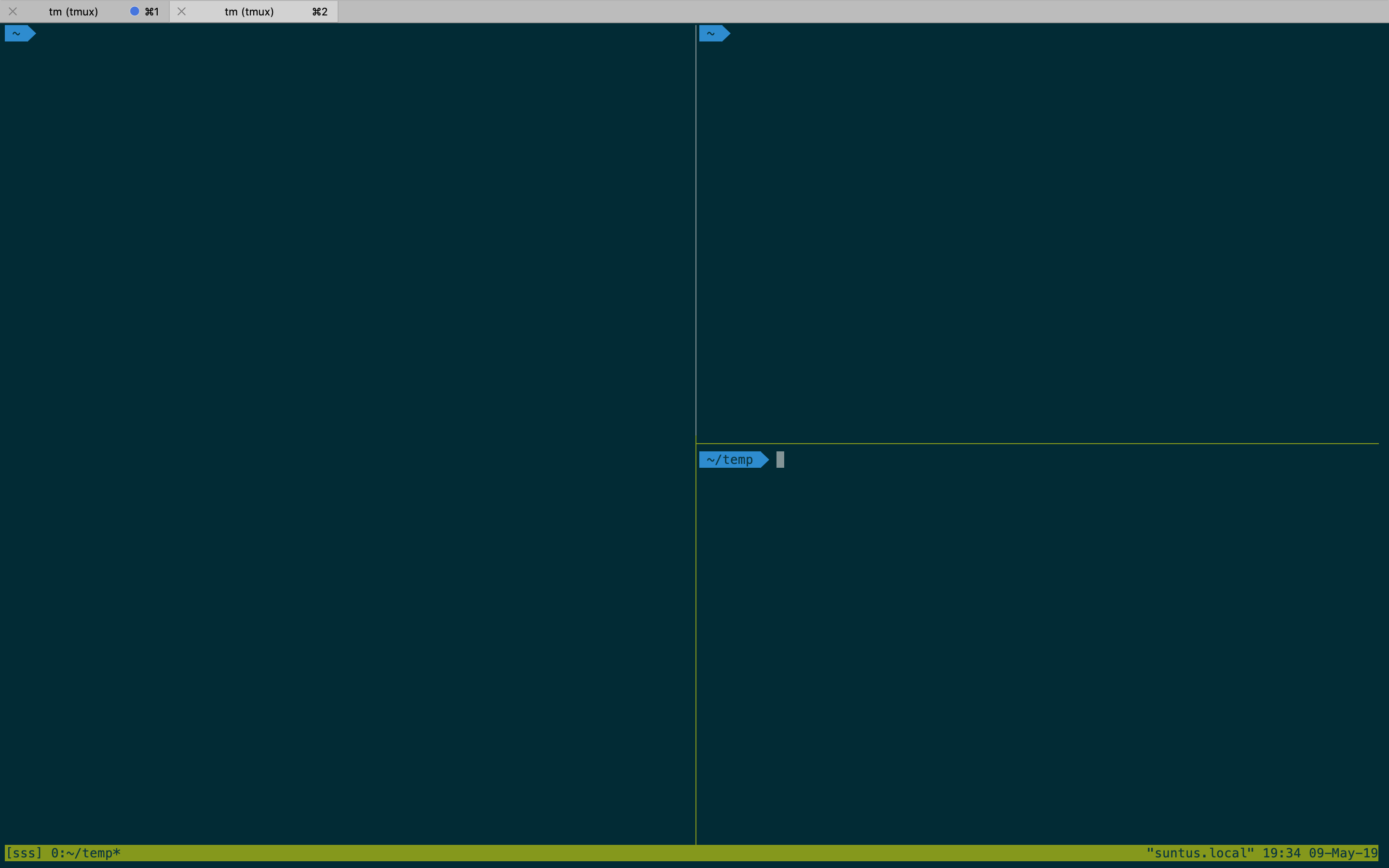1
2
3
4
5
6
7
8
9
10
11
12
13
14
15
16
17
18
19
20
21
22
23
24
25
26
27
28
29
30
31
32
33
34
35
36
37
38
39
40
41
42
43
44
45
46
47
48
49
50
51
52
53
54
55
56
57
58
59
60
61
62
63
64
65
66
67
68
69
70
71
72
73
74
75
76
77
78
79
80
81
82
83
84
85
86
87
88
89
90
91
92
93
94
95
96
97
98
99
100
101
102
103
104
105
106
107
108
109
110
111
112
113
114
115
116
117
118
119
120
121
122
123
124
125
126
127
128
129
130
131
132
133
134
135
136
137
| # (‑●‑●)> released under the WTFPL v2 license, by Gregory Pakosz (@gpakosz)
unbind C-b
set -g prefix C-a
#up
bind-key k select-pane -U
#down
bind-key j select-pane -D
#left
bind-key h select-pane -L
#right
bind-key l select-pane -R
#在当前路径打开新窗口
bind-key c new-window -c "#{pane_current_path}"
bind-key '"' split-window -c "#{pane_current_path}"
bind-key % split-window -h -c "#{pane_current_path}"
#select last window
bind-key C-l select-window -l
#copy-mode 将快捷键设置为vi 模式
setw -g mode-keys vi
# use the powerline patched font variant of the theme, possible values are:
# - default
# - powerline
tmux_conf_theme=default
#tmux_conf_theme=powerline
# display an indicator in the status line when the prefix key has been pressed,
# possible values are:
# - enabled
# - disabled
tmux_conf_theme_prefix=disabled
#tmux_conf_theme_prefix=enabled
# display the battery information in the status line, possible values are:
# - enabled
# - disabled
tmux_conf_theme_battery=enabled
#tmux_conf_theme_battery=disabled
# style to use for the battery status, possible values are:
# - bar
# - percentage
tmux_conf_battery_style=bar
#tmux_conf_battery_style=percentage
# symbols to use for battery status, possible values are:
# - block
# - heart
tmux_conf_battery_symbol=block
#tmux_conf_battery_symbol=heart
# number of symbols to use for battery status
tmux_conf_battery_symbol_count=auto
#tmux_conf_battery_symbol_count=5
# palette used for the battery status, possible values are:
# - 'colour_full_fg,colour_empty_fg,colour_bg'
# - heat
# - gradient
tmux_conf_battery_palette='#d70000,#e4e4e4,#000000'
#tmux_conf_battery_palette=colour160,colour254,colour16
#tmux_conf_battery_palette=heat
#tmux_conf_battery_palette=gradient
# display the battery status: charging (U+26A1) / discharging (U+1F50B)
tmux_conf_battery_status=enabled
#tmux_conf_battery_status=disabled
# or alternatively use an external tool, e.g. [https://github.com/Goles/Battery](https://github.com/Goles/Battery)
#tmux_conf_battery='#(battery -t) '
# display the time in the status line, possible values are:
# - enabled
# - disabled
tmux_conf_theme_time=enabled
#tmux_conf_theme_time=disabled
# display the date in the status line, possible values are:
# - enabled
# - disabled
tmux_conf_theme_date=enabled
#tmux_conf_theme_date=disabled
# display the username in the status line, possible values are:
# - enabled
# - disabled
# - ssh
tmux_conf_theme_username=enabled
#tmux_conf_theme_username=disabled
#tmux_conf_theme_username=ssh
# display the hostname in the status line, possible values are:
# - enabled
# - disabled
# - ssh
tmux_conf_theme_hostname=enabled
#tmux_conf_theme_hostname=disabled
#tmux_conf_theme_hostname=ssh
# highlight focuse pane, possible values are:
# - enabled
# - disabled
tmux_conf_theme_highlight_focused_pane=disabled
#tmux_conf_theme_highlight_focused_pane=enabled
# should new windows retain current path, possible values are:
# - true
# - false
tmux_conf_new_windows_retain_current_path=false
#tmux_conf_new_windows_retain_current_path=true
# should new panes reatin current path, possible values are:
# - true
# - false
tmux_conf_new_panes_retain_current_path=true
#tmux_conf_new_panes_retain_current_path=false
# prompt for session name when creating a new session, possible values are:
# - true
# - false
tmux_conf_new_session_prompt=false
#tmux_conf_new_session_prompt=true
# if you're running tmux within iTerm2
# - and tmux is 1.9 or 1.9a
# - and iTerm2 is configured to let option key act as +Esc
# - and iTerm2 is configured to send [1;9A -> [1;9D for option + arrow keys
# then uncomment the following line to make Meta + arrow keys mapping work
#set -g terminal-overrides "*:kUP3=\e[1;9A,*:kDN3=\e[1;9B,*:kRIT3=\e[1;9C,*:kLFT3=\e[1;9D"
# ------------------------------------------------------------------------------
# this is the place to further customize tmux's configuration
#set -g history-limit 10000
|
